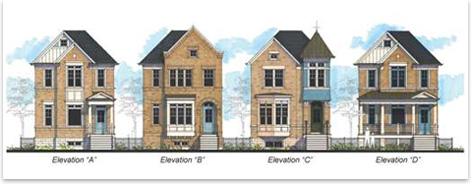
Planting Community in Fallow Fields by Zach Mortice
Summary: A team of residential developers and home builders are planning a 1,200-acre redevelopment project for Detroit’s far eastside. Though it borders much more prosperous suburbs, this neighborhood has been largely abandoned and left to rot. The New Far Eastside Detroit development company is attempting to rebuild and re-brand this area as an urban neighborhood with access to suburban amenities in the hopes of attracting young professionals in the market for their first home. Contention between city and suburb are commonplace barometers of the health and vitality of all metropolises. But the city of Detroit has inadvertently perfected the art of urban and suburban disharmony. There, the city line can look like militarized refugee crossing. On Detroit’s eastern border demarcated by Alter Road, the plush suburban homes of Grosse Pointe Park give way to sagging, decrepit husks largely surrounded by abandoned lots and emerging urban prairie almost instantly.
No other city in America has come to embody the decline of the American industrial economy and the demographic ravages it causes better (or perhaps worse) than Detroit. But no one is putting up a fence or customs booth just yet. Instead, a group of developers, community activists, and architects are hoping to use the stability of the neighboring suburban districts to jump-start development in these dormant and declining areas. The New Far Eastside Detroit development company is trying to bring 3,000 new homes to a staggeringly expansive 1,200 acres of mostly abandoned land along the city’s Alter Road border with Grosse Point Park. “It certainly is the largest urban redevelopment project outside of the devastation of Hurricane Katrina,” says Jennifer Madden, New Far Eastside Detroit’s executive vice president.
The extraordinary state of urban under-development in Detroit has led New Far Eastside Detroit to take a new approach to filling these lots. Most urban redevelopment projects begin in the city center and push outward, and in this way, Detroit is not much different. One-and-a-half billion dollars have been pumped into its downtown and midtown districts, according to the Hartford Courant. But, large-scale redevelopment projects that take place on land adjacent to suburbs are rare. The exceptional vastness of these under-developed plots has given New Far Eastside Detroit the opportunity to co-opt the affluence and stability of the suburbs to create an entirely new neighborhood from virtually nothing.
The density of the new development will likely be relatively high for Detroit, a sprawling city planned and powered by the dictates of the automobile. The city lost more than 20 percent of its population from 1970 to 1980 alone. Its 142 square miles were “large enough for a city of 3 million, it never quite hit 2 million, and now it’s about 850,000,” says Kelbaugh. The Fox Creek development alone will put 650 homes on 140 acres (currently there are only 235 structures still standing in this area) and the large amount of commercial real estate, green space, and public facilities set aside by the master plan are likely to push density up higher. If they build it, will they come?
New Far Eastside Detroit’s biggest challenge will be to attract buyers with what Program Manager Robyn Coley calls the “Fox Creek lifestyle”—a mix of the “glitz of the big city” (a seldom-heard adjective for Motown these days) “and the amenities of the suburbs.” Their target demographic could easily be swept into redevelopments closer to downtown, says Kelbaugh. To attract the hip, young professionals who want to stay in the city while maintaining access to suburban conveniences, BSB has also designed a flat-roofed Modernist-inspired house for Fox Creek. Mixed-use urban spaces and possible LEED certification are also a part of the plan. Meanwhile, New Far Eastside Detroit will also have to maintain the support of the current resident’s of the neighborhood, and have thus pledged not to use eminent domain to evict the relatively few people still living there. “[New Far Eastside Detroit] has a difficult path in that up front they have to appeal to the existing residents who have a predominately traditional mindset, but yet push for a modern way of living for the younger crowd,” says Bucy. “The intermixing of the new and old styling will only strengthen the landscape fabric of the city.” |
||
Copyright 2007 The American Institute of Architects. All rights reserved. Home Page |
||
home
news headlines
practice
business
design
recent related
› Doer’s Profile: Mayor R.T. Rybak (Minneapolis)
› Doer’s Profile: Dan Rockhill (Kansas City, Mo.)

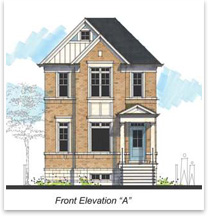
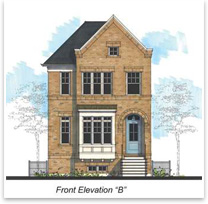
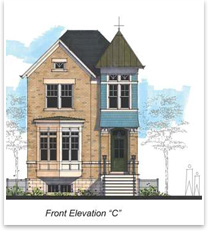
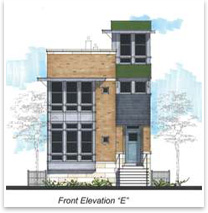 Keeping the suburbs out of the city
Keeping the suburbs out of the city